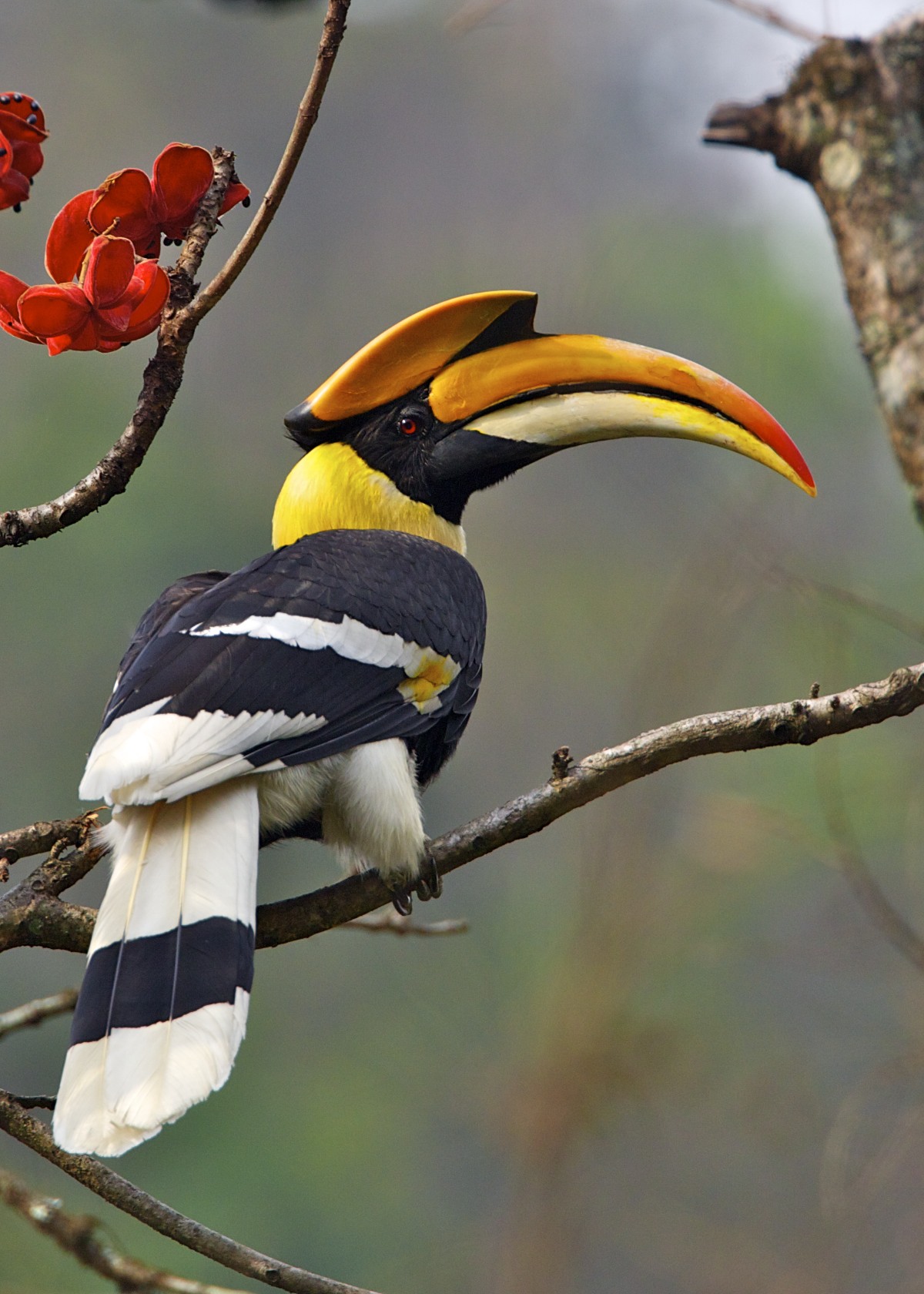
Buceros bicornis
SUBFAMILY
Bucerotinae
TAXONOMY
Buceros bicornis Linnaeus, 1758, Bengkulu, Sumatra. Monotypic.
OTHER COMMON NAMES
English: Great Indian hornbill, great pied hornbill, giant hornbill,
concave-casqued hornbill; French: Calao bicorne; German:
Doppelhornvogel; Spanish: Cбlao bicorne.
PHYSICAL CHARACTERISTICS
37.4–41.4 in (95–105 cm); female 4.74–7.37 lb (2.15–3.35 kg),
male 5.72–7.48 lb (2.6–3.4 kg). Large, pied hornbill with long
yellowish bill (usually dyed with preen oil) and a large, flat,
double-pointed casque. Black with white plumage at head,
wing coverts, and tail.
DISTRIBUTION
Southwestern India, southern Himalayas, east to Myanmar,
south China and Vietnam, south down the Malaysian peninsula
and Sumatra.
HABITAT
Prefers large blocks of primary rainforest but in Indonesia
found on forest edge and in disturbed habitats.
BEHAVIOR
Generally found as resident pairs and believed to be territorial.
Makes a variety of loud calls audible from more than 873 yd
(800 m). When aggressive, bounces up and down on perch and
flicks the bill.
FEEDING ECOLOGY AND DIET
Feeds primarily in the canopy of fruiting trees, but also takes
animal prey. Especially fond of figs.
REPRODUCTIVE BIOLOGY
Nests high in large, forest trees, generally in January through
April. Lays one to four eggs; incubation 38–40 days with fledging
occurring 72–90 days after hatching. Female molts wing
and tail feathers after sealing and emerges well before the oldest
chick fledges.
CONSERVATION STATUS
Considered Near Threatened and listed on the Convention for
International Trade in Endangered Species’ (CITES) Appendix
II, prohibiting unauthorized possession, sale, or importation of
living birds or their parts.
SIGNIFICANCE TO HUMANS
Hunted for trophies, food, and medicine. Considered “superior
meat” in India. Heads are used to decorate ceremonial hats in
India and are commonly traded as souvenirs in Thailand.
Photo Gallery of - Great hornbill




 Animalia Life
Animalia Life